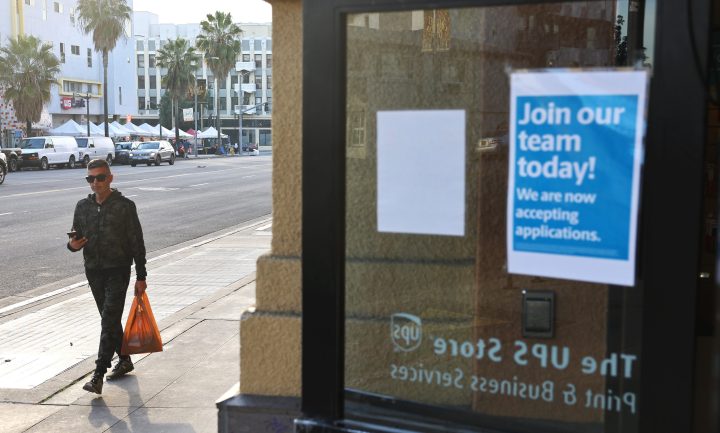
Continuing unemployment claims, explained

According to weekly jobless claims data released Thursday, the number of Americans filing for unemployment benefits — or “initial claims” — fell more than expected, with about 3,000 fewer applicants than the previous week.
Continuing claims for unemployment insurance are down as well, with nearly 37,000 fewer than the previous week.
Because these numbers are weekly, it can be pretty easy to let them blow by in the flood of economic data available, but the claims numbers tell more about the labor market than a lot of other data … and maybe less.
When people talk about unemployment claims, they are typically referring to the whole country. But states have different systems, different rules, different payouts, and the benefit has a recurring expiration date, said Kathryn Anne Edwards, a labor economist and policy consultant at the Rand Corp.
“And it absolutely expires,” she said. “It has the most frequent recertification to say, ‘I’m still unemployed, I’m still looking, I still don’t have a job. And I need to claim this for a week.'”
But not everyone who loses a job applies for unemployment insurance. Many fewer keep reapplying to maintain it.
“If, for example, they have severance payments, they may not see the need to do this,” said Audrey Guo, who teaches economics at Santa Clara University’s Leavey School of Business.
Despite the fact that continuing claims numbers don’t capture everyone who’s out of work, “continuing claims kind of gives us a sense of how long unemployment spells last,” Guo explained.
The current numbers are saying it’s not that long.
“Everything that we’re seeing is indicating that we have a really tight labor market or we would have seen claims stay persistent much longer,” said Gary Hoover, professor of economics at Tulane University. “And we would have seen increases in initial jobless claims. Neither one of those are taking place.”
Getting these numbers weekly helps economists and business journalists alike keep close tabs on these trends, and they can see pretty quickly when things change in the labor market. But not everyone thinks that kind of monitoring is necessary.
“I think I’m a little bit cynical about this, where I don’t think we need to pay attention to it every week,” said Div Bhagia, who teaches economics at California State University, Fullerton. “But I think what helps us to look at it in the whole picture … how has this been going for the last two months or last three months? And that gives us sort of an idea of where we’re headed.”
Which, of course, could completely change next week.
There’s a lot happening in the world. Through it all, Marketplace is here for you.
You rely on Marketplace to break down the world’s events and tell you how it affects you in a fact-based, approachable way. We rely on your financial support to keep making that possible.
Your donation today powers the independent journalism that you rely on. For just $5/month, you can help sustain Marketplace so we can keep reporting on the things that matter to you.

















